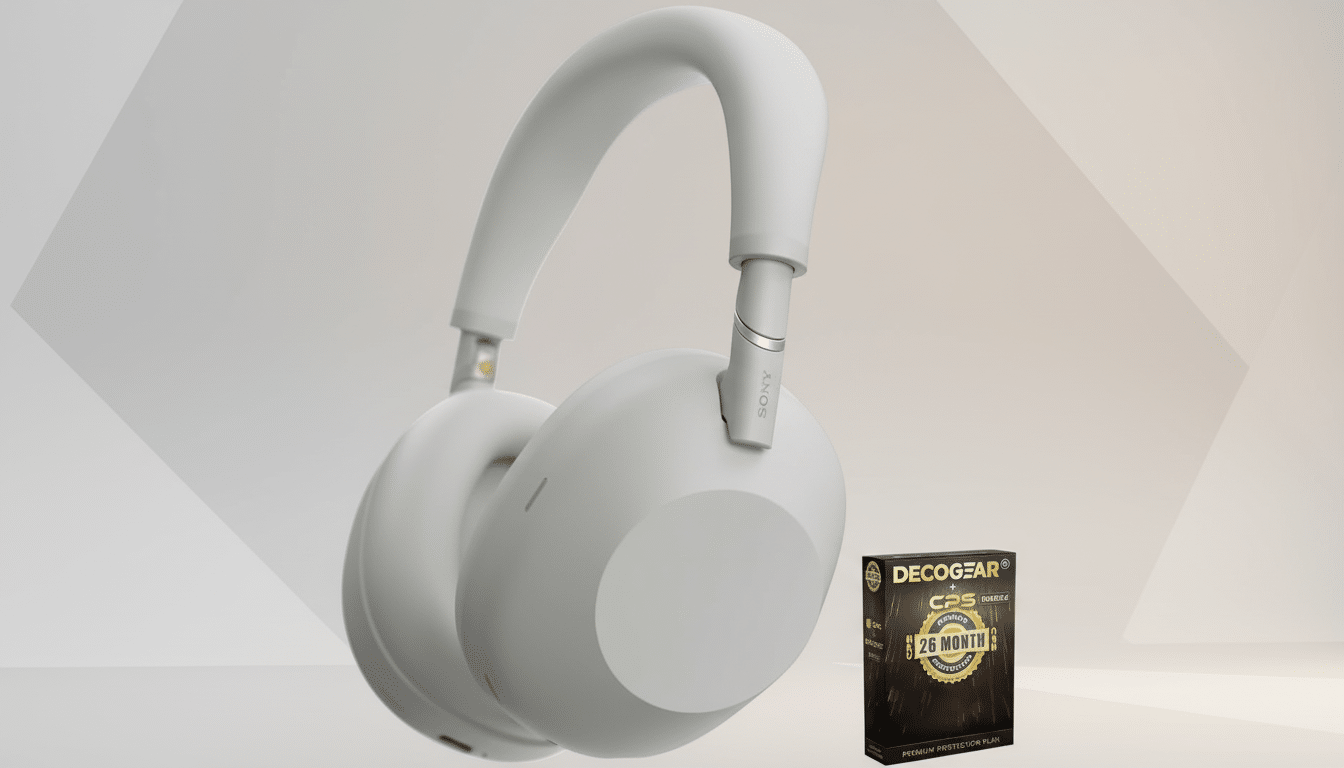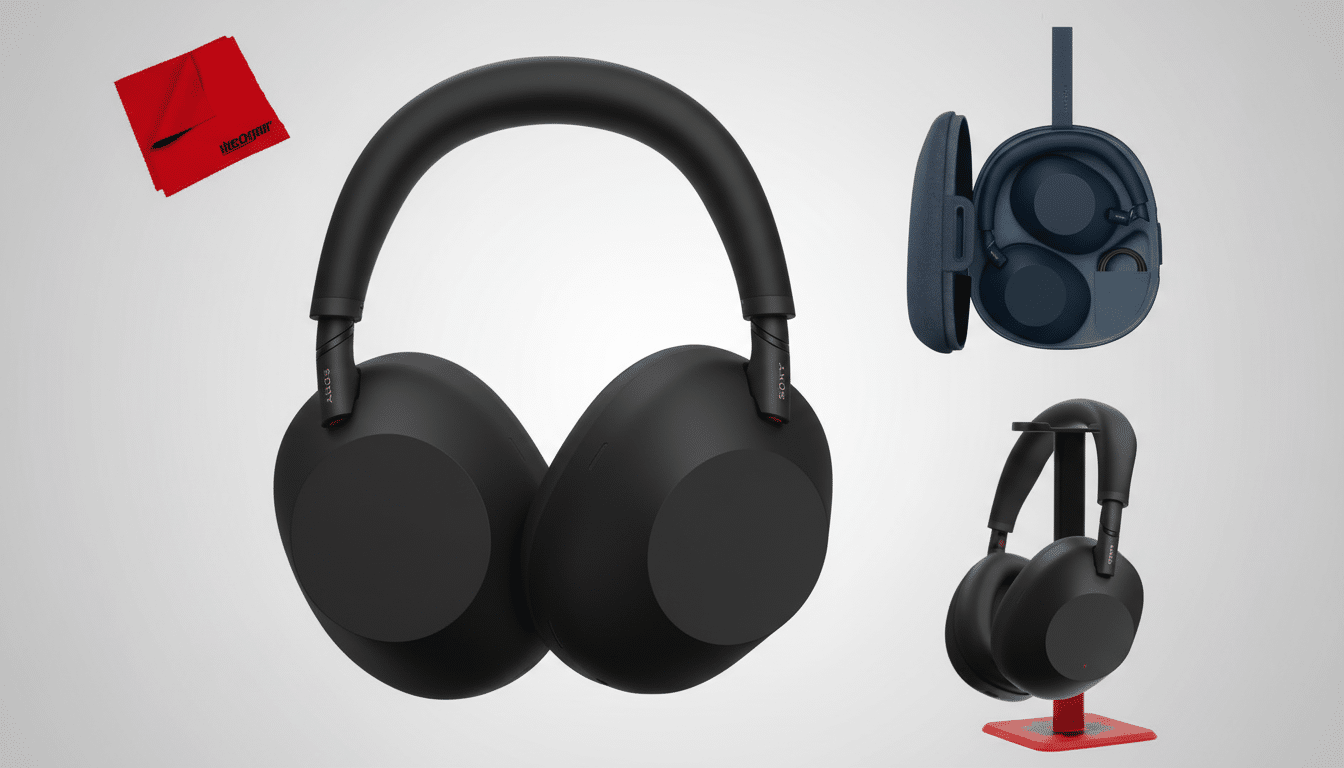Having tested dozens of noise-cancelling headphones on red-eyes, transatlantic hauls, and jumpy regional hops, one pair has consistently been re-clipped to my carry-on: the Sony WH-1000XM6.
It is a rare travel headphone that achieves the trifecta of what matters most at 35,000 feet: best-in-class active noise cancellation, long-haul comfort, and sound quality that survives even when you forget to charge your phone.

What’s Important at 35,000 Feet for In-Flight Listening
Airplane cabins are much noisier than most passengers believe. Cruise-level cabin noise typically is in the range of high 70s to mid-80s dBA, with engine rumble concentrated from around 100 to 400 Hz, according to guidance from aviation and public health agencies including the FAA and CDC. Long-term exposure equals fatigue—morning, noon, or night. Long-term noise is correlated with rising stress, and cognitive performance cannot go unaffected. For travelers, that means one thing: kill the low-frequency drone, without making things worse.
In testing, class-leading ANC headphones can reduce 20 to 30 dB in that engine-rumble range under controlled lab conditions—and now better models also shave off more of the higher-frequency chatter that leaks through in open cabins. The XM6 is unique because it significantly ups both ends of that equation.
ANC and audio that stand above the cabin drone
The XM6 jumps forward with a new processor platform, along with a 12-microphone array (six per earcup) that does even better at separating out cabin roar from speech and sudden clanks. Sony’s reworked noise-cancelling engine was made to process more concurrent inputs with less latency, and it shows on planes: the low-frequency thrum of engines reduces to a whisper, and high-frequency chatter is dulled without any of the “eardrum suck” artifacts still present in many aggressive ANC profiles.
Sound quality is still unmistakably Sony—warm, full-bodied, and sophisticated. The bass is tight but not bloated, and there’s plenty of room for clean mids and solid vocals. On flights—where cabin noise can keep details under wraps—the XM6 maintains clear instrumentation separation and imaging better than rivals I chained to my ears on the same legs. Call quality is also an upgrade, with beamforming mics doing a good job of isolating speech well in gate areas and mid-flight when your background systems get loud.
Comfort and case design built for frequent travel
Comfort is where the XM6 corrects its predecessor’s greatest miss. The slightly wider headband and a little bit rounder earcups make the pressure distribution even, so you can have them on for a whole long-haul journey without any hotspots. They’re a few grams heavier than the previous generation, but there’s an excellent clamping force-to-padding ratio that makes them feel lighter the longer you wear them. For people who wear glasses, the seal is a given without uncomfortable pressure spots.
Crucially, Sony brought back the folding dual hinge. That change reduces its footprint and reintroduces the travel case that fits a jam-packed backpack pocket. The new case has a magnetic latch and an intelligent internal shape that quickly slots the earcups into place when boarding. Tactile controls are improved, as well: there’s now a slightly recessed power button that offers more positive feedback and guidance in dark cabin conditions, and touch gestures remain punchy for volume adjustments on the fly.

Battery life and wireless reliability in the air
There should be no range anxiety at 38,000 feet and there isn’t here. The XM6 has up to 30 hours of battery life with ANC on, and 40 with it off. So you comfortably outlast many of the flagships I’ve tried recently, which are rated around 20 to 24 hours. A three-minute top-up gets you around three hours of playback—so, taxi, takeoff, first-movie territory if you forgot to charge overnight.
Stable connectivity even in the most chaotic RF environments like bus gates, packed cabins, and multi-device pairing. Moving between a phone and the seatback streaming box from a Bluetooth transmitter caused no dropouts, with latency low enough to keep lip-sync believable on most airline systems.
How it compares to trusted competitors on flights
Bose’s leading QuietComfort model continues to excel at offering effortless comfort and good reception of speech frequencies, but the XM6 outperformed it in overall noise reduction on several flights—especially for whiny high-frequency cabin noise—along with a punchier bass sound and better midrange clarity. Apple’s flagship over-ear cans are a barnstormer within the ecosystem, but its battery life is left wanting for long-haul flights and that case-and-carry experience leaves regular flyers raging. A sleeker choice from Sonos sounds great, but loses marks by not folding up and taking a big bite of bag space. (My favorite ones I’ve tested, from the likes of Bose and Sony, managed 40 to 50 dB.) Compact earbuds like Google’s latest are still amazing for minimalist travel, but over-ears with bigger drivers and more microphones will still win when those cabins get really loud.
Independent labs and reviewers have started to reach a consensus in the early testing cycles: the number of microphones or processing power matters less as marketing specs but more as system-level gains when tuned properly. And that’s where the discipline comes in; the XM6 is a case of proof-of-hardware, as in: upgrade your hardware for real-time benefit.
The frequent flyer’s verdict after long-haul testing
If you’re motivated to step off your flight feeling well-slept, with ears unfatigued and playlist intact, the Sony WH-1000XM6 is the full-package travel headphone I’ve used this year. It drowns out the right noise, consistently sounds as good as it does in ideal conditions, and addresses a few key pain points most other ANC headphones have with a nice hardshell case that you’re not afraid to travel with. Based on typical cabin noise profiles that aviation and health agencies see, the XM6’s tuning seems to be a sweet spot for real airplanes, not just lab benches.
Lots of models are good at one or two things. The XM6 is a unicorn in that it’s got the best of all of them where it counts most: on the plane.

